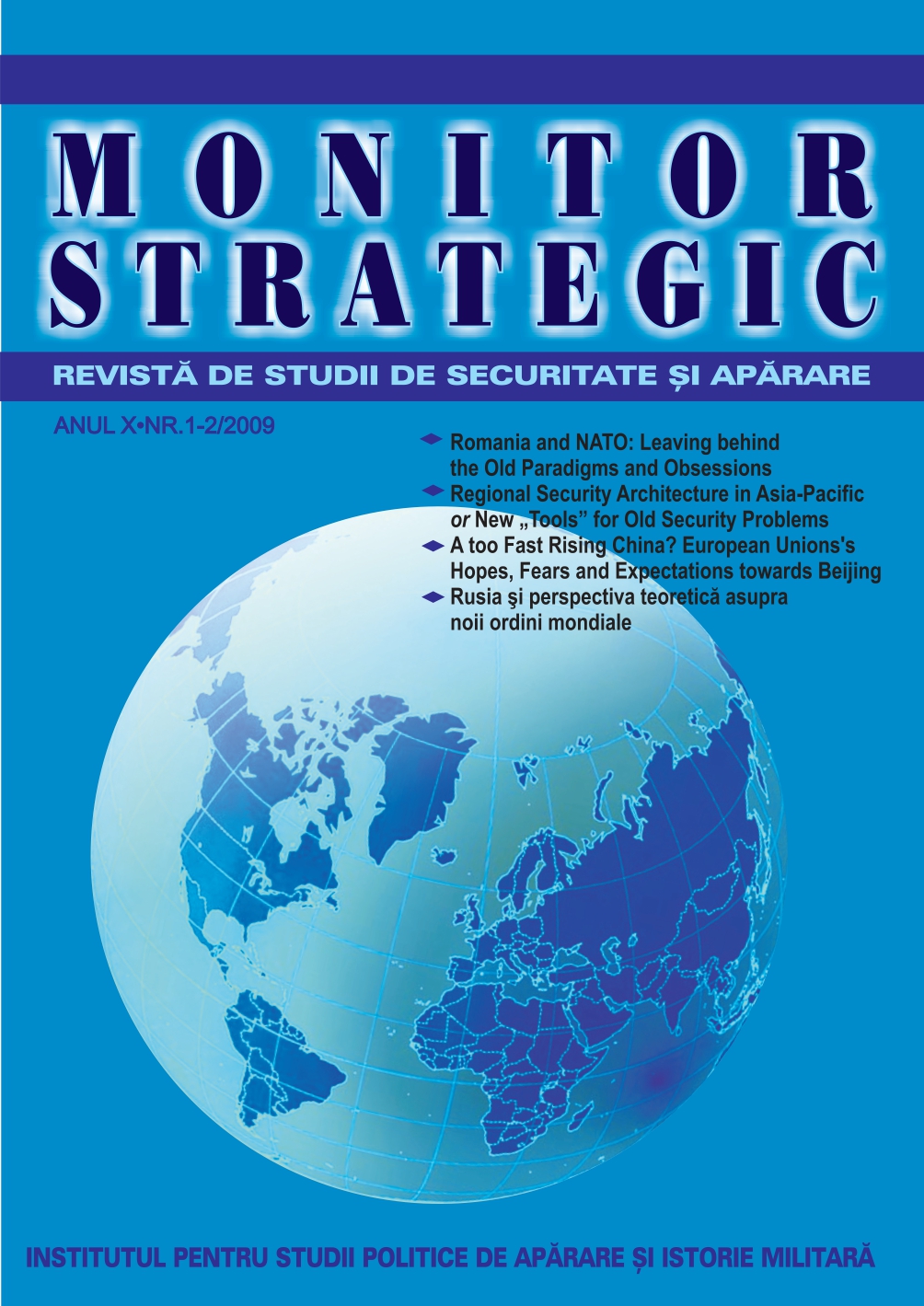Regional Security Architecture in Asia-Pacific or New „Tools” for Old Security Problems
Regional Security Architecture in Asia-Pacific or New „Tools” for Old Security Problems
Author(s): Simona SoareSubject(s): Architecture, International relations/trade, Security and defense
Published by: Editura Militară
Keywords: regional; security; architecture;
Summary/Abstract: The European model of regional integration in the security field does not seem to be the model that is currently developing in Asia-Pacific, where institution-building is seen particularly as an instrument of hedging (especially by minor powers) or “soft balancing” among the major actors of the region. Bilateral and multilateral levels of regional security architecture work as a means for mutually countering or limiting influence. Moreover, most regional institutions have strongly developed security dimensions, which the EU and the US argue is due to a Chinese attempt at monopolizing security-provision in Asia-Pacific; this is a dangerous path that signals China’s pursuit of regional hegemony, a theory long advanced by both neorealists and many neoclassical realists. However interesting, this picture is not entirely accurate. Asia-Pacific’s security architecture is that of a power transition-period, a transition marked by foameting instability, uncertainty and the implicit question: will there be a peaceful transition of power? The forces that shape the security environment in the Asia-Pacific (unlike the economic ones) rest less on its current situation and more on the expectations of all actors involved regarding their evolution as well as that of their opponents and partners throughout the next 20-25 years. China is clearly perceived as a long-term threat by all the states in the region – including its own satellites, the DPRK and Myanmar. But the perception of Beijing as long-term threat creates a perverse effect within regional politics that allows the involved states to pursue policies enhancing their own short-term interests while inquiring for the best manner in which to respond to this Chinese threat. The Chinese and the US’ regional polices are key to building the regional security architecture in Asia-Pacific and we are recently seeing significant shifts in this sense.
Journal: Monitor Strategic
- Issue Year: 2009
- Issue No: 1-2
- Page Range: 67-98
- Page Count: 32
- Language: English

